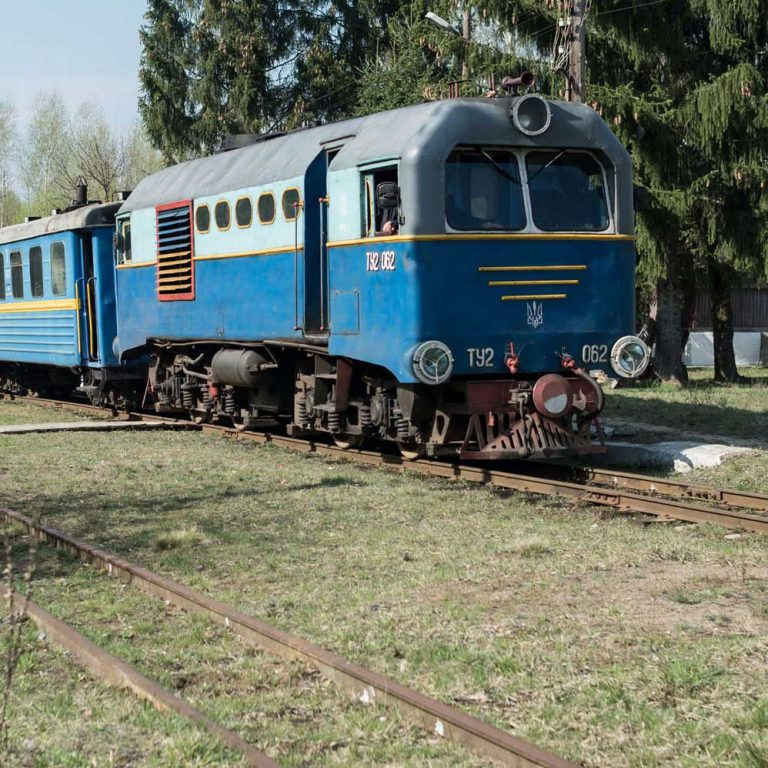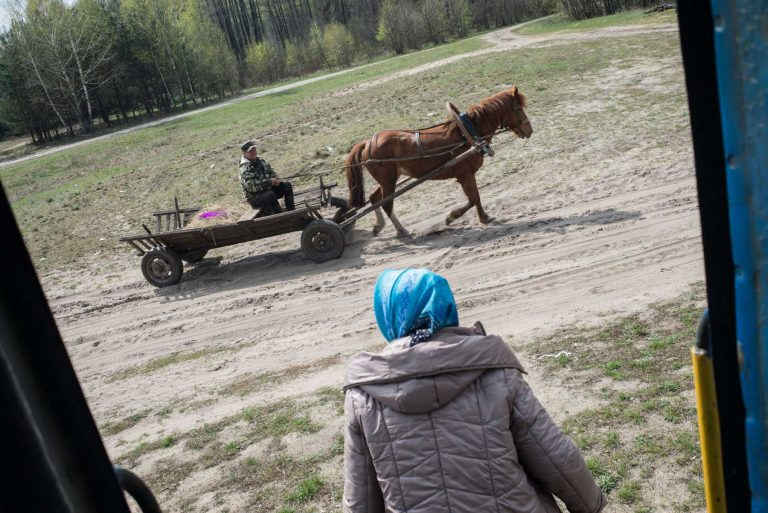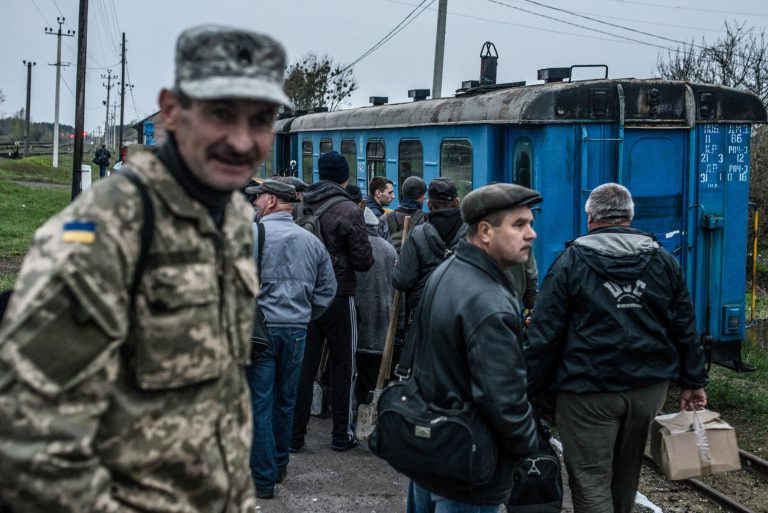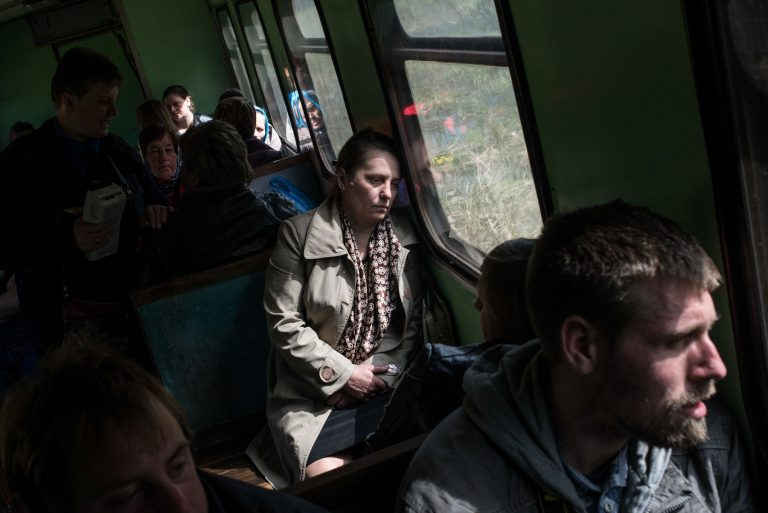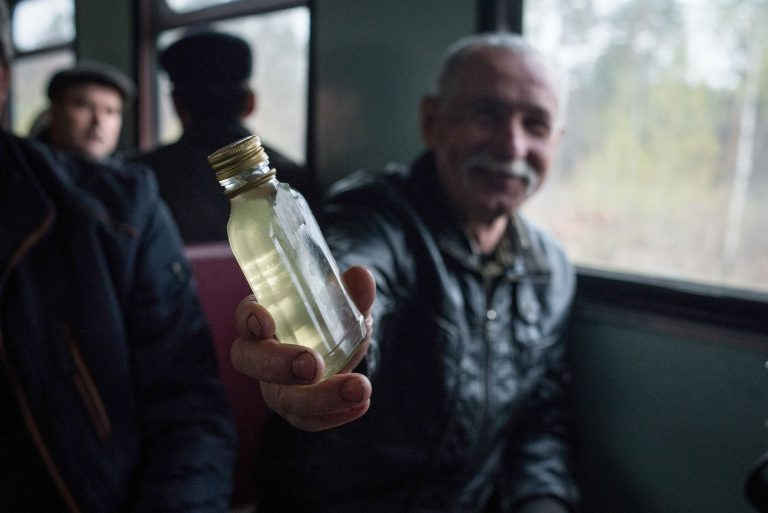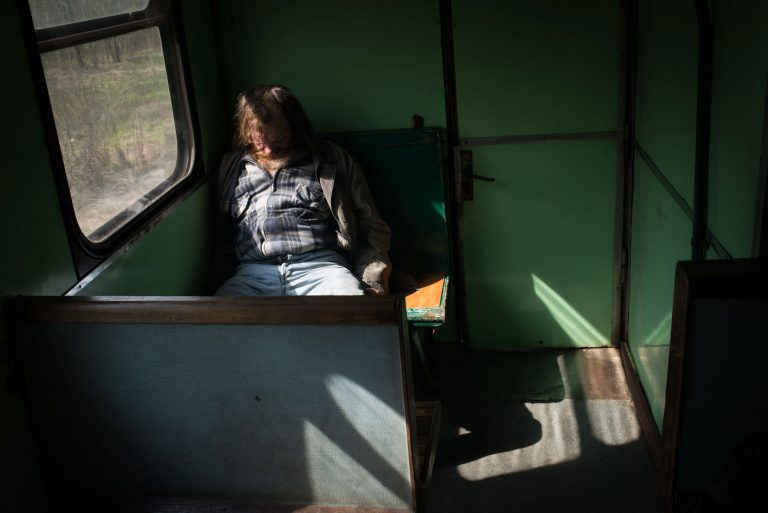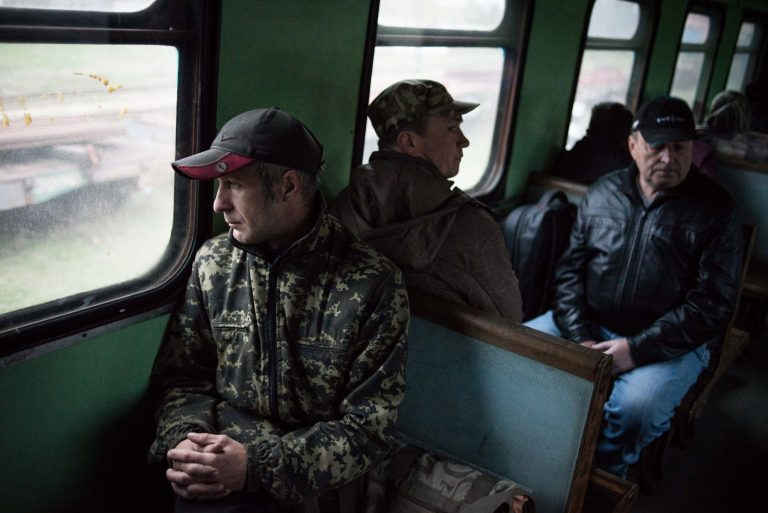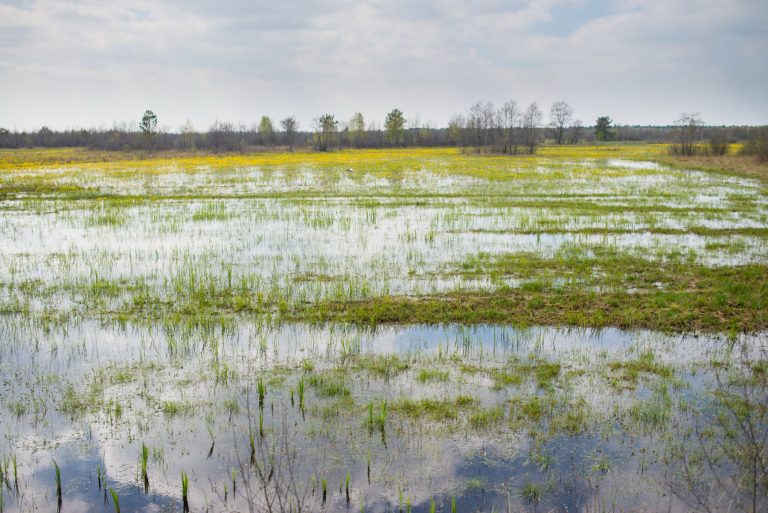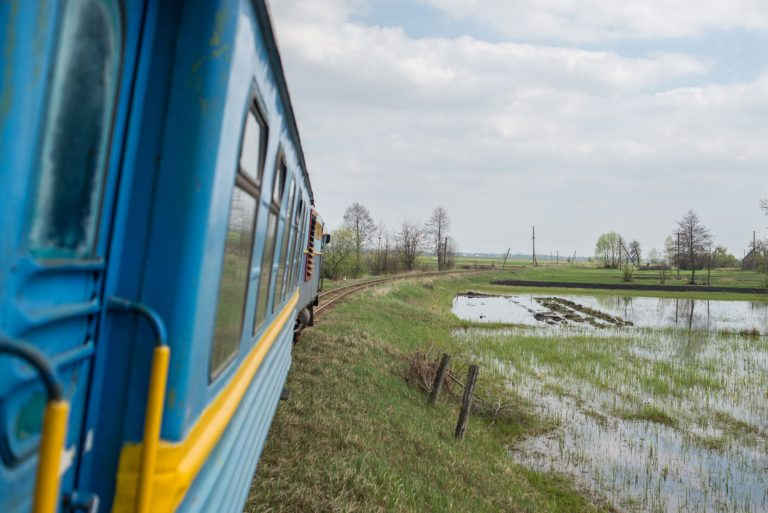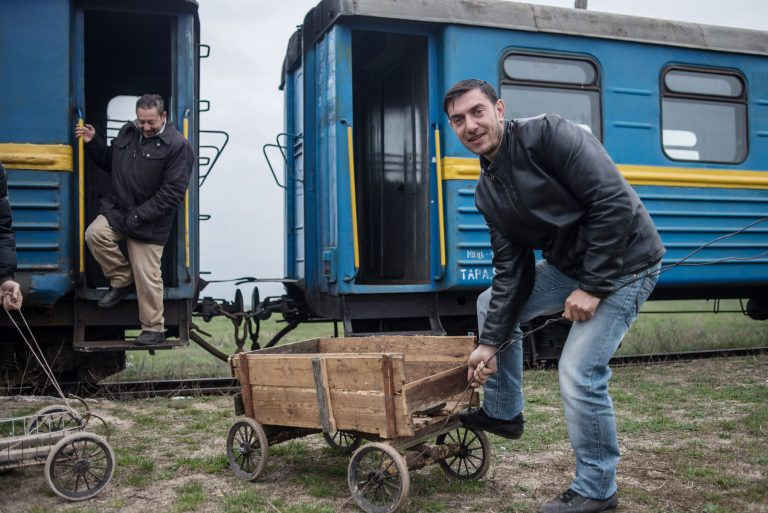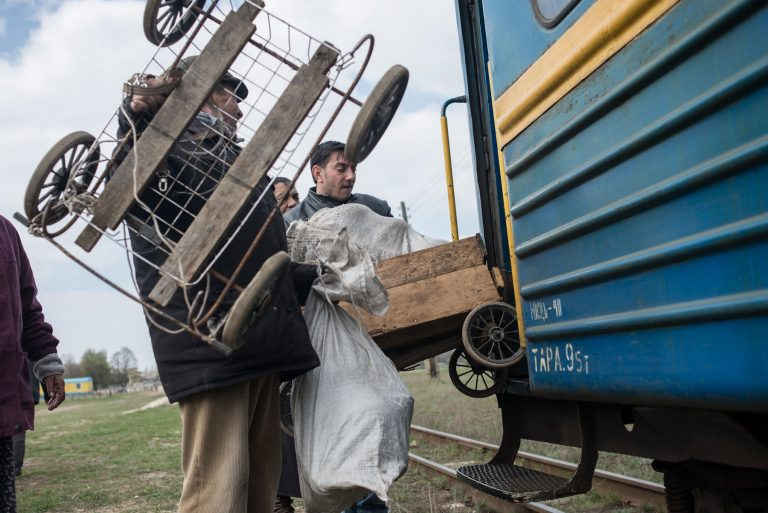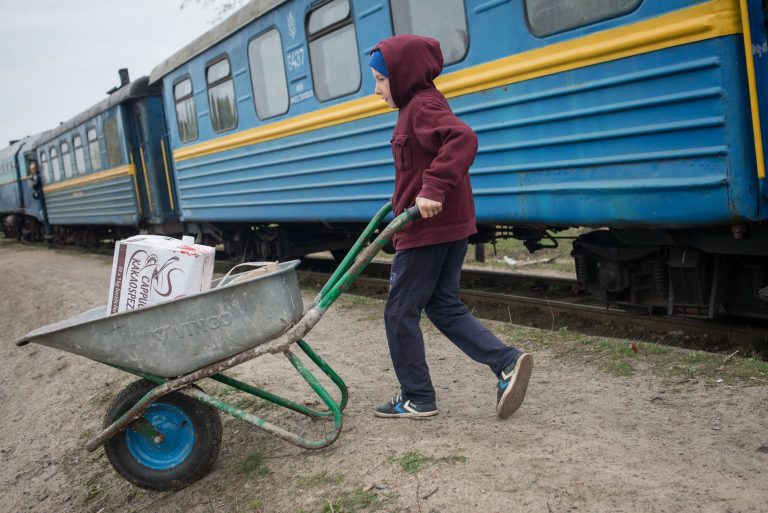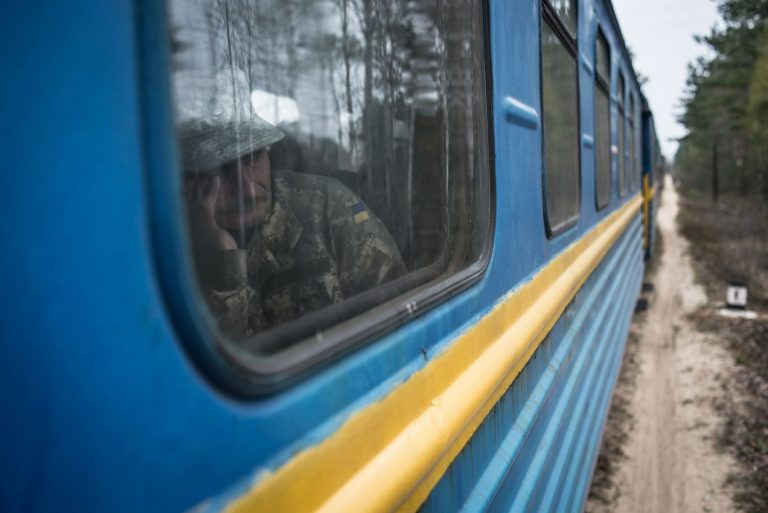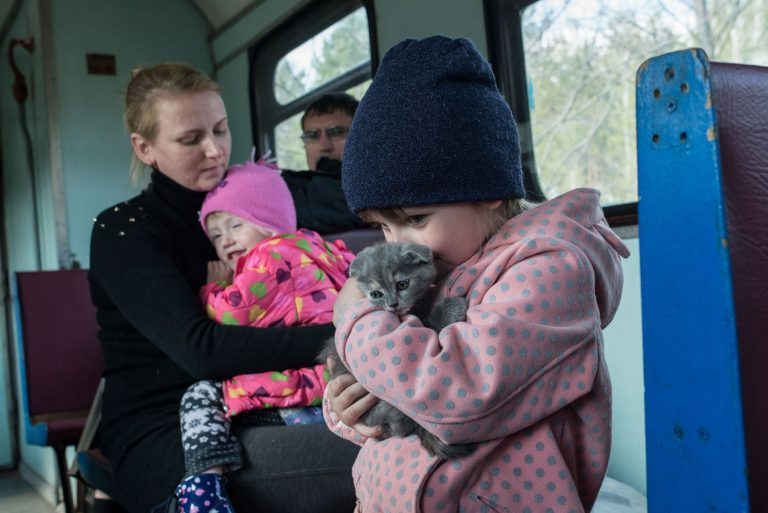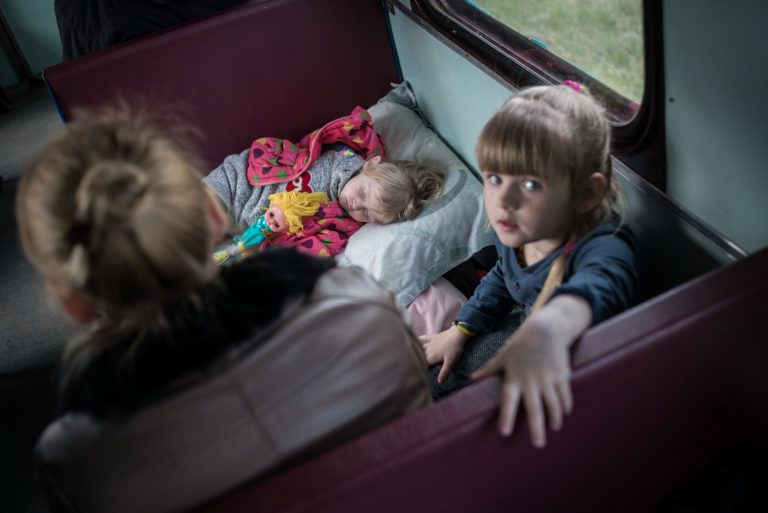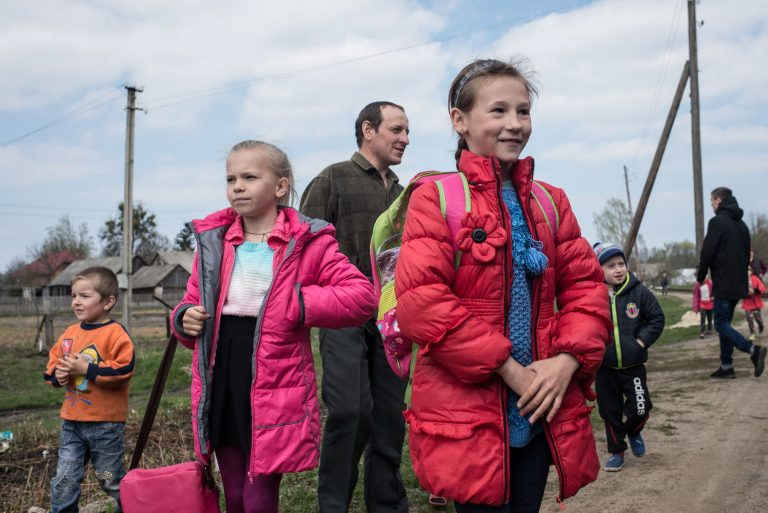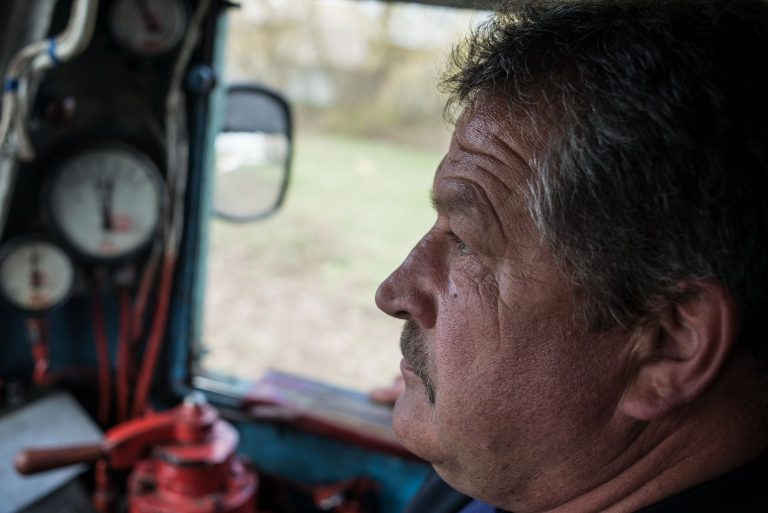An unusual track which is 750 mm wide (a standard railroad track is 1520 mm wide) starts from the station town Antonivka (Polissia) and extends to 106 km to the station Zarichne. It is the longest narrow-gauge railway in Europe. On its way — the pristine beauty of pine forests, blue lakes and little-known attractions for tourists.
The narrow-gauge Antonivka-Zarichne (the local residents call it “puff puff” (poizdok), “narrow” (vuzka), “dolly” (kukushka) has been working for more than 115 years. At first this railway was used for the transportation of wood, and later — for peat.
During the World War I the narrow-gauge railway became an important strategic military object: there were severe battles for it, because it was almost the only fast-moving vehicle for transportation of soldiers and equipment through the impassable marshy terrain.
During the World War II the railway was destroyed. Decades away, in 1970s-1980s, the narrow-gauge has gained its modern look. The steam locomotives were replaced by diesel units, the old passenger cars were renovated. As a result a new depot was built and a road linking the two districts of Polissia — Volodymyrets and Zarichne — was laid.
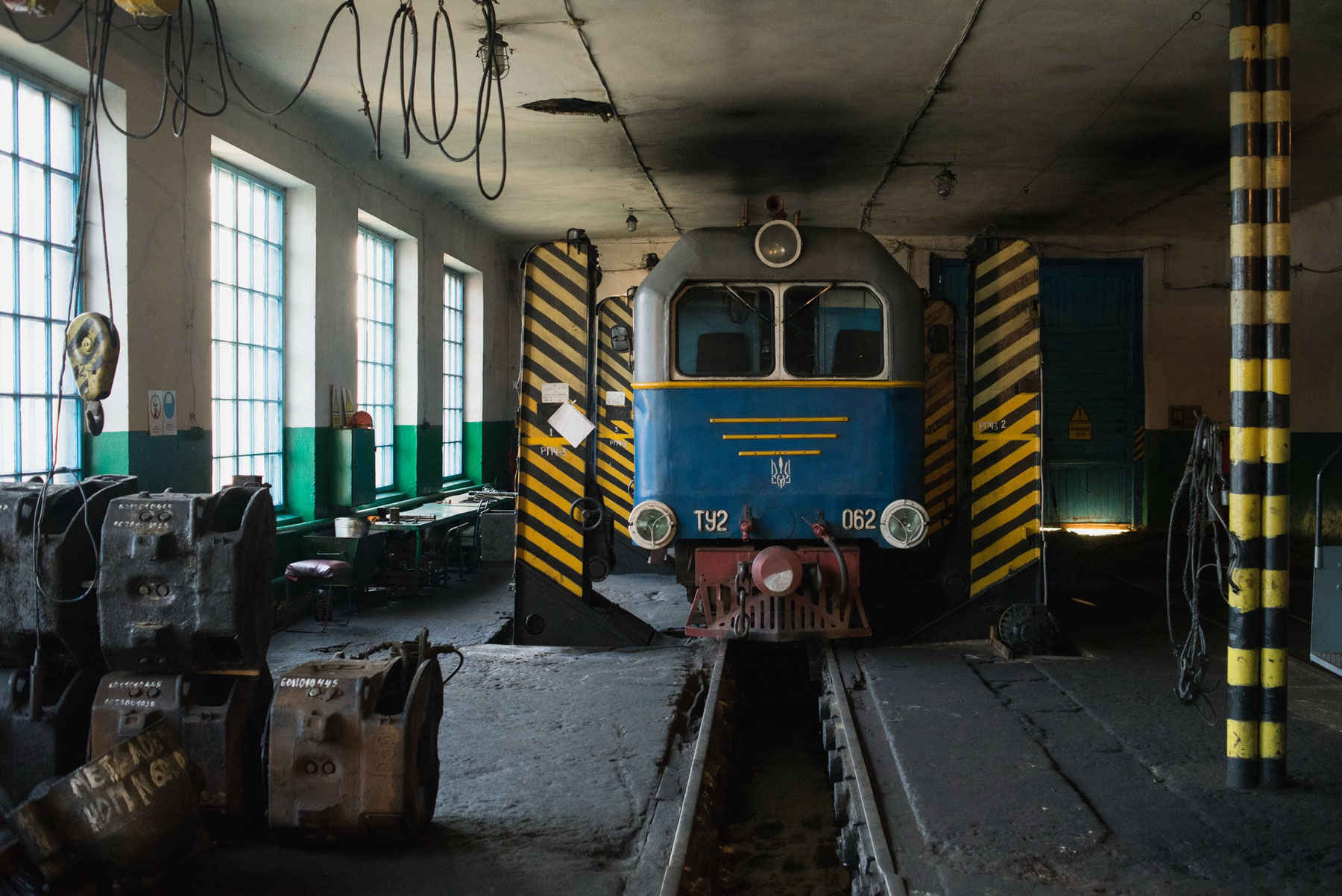
Because of the economic crisis in 1990s the freight traffic was stopped. Almost all diesel locomotives were cut into scrap. The question about the closure of the railway arose. However, taking into account the fact that the Polissia railway was the most important mean of communication with the district centers, it continued to function and still transports passengers up to now daily.
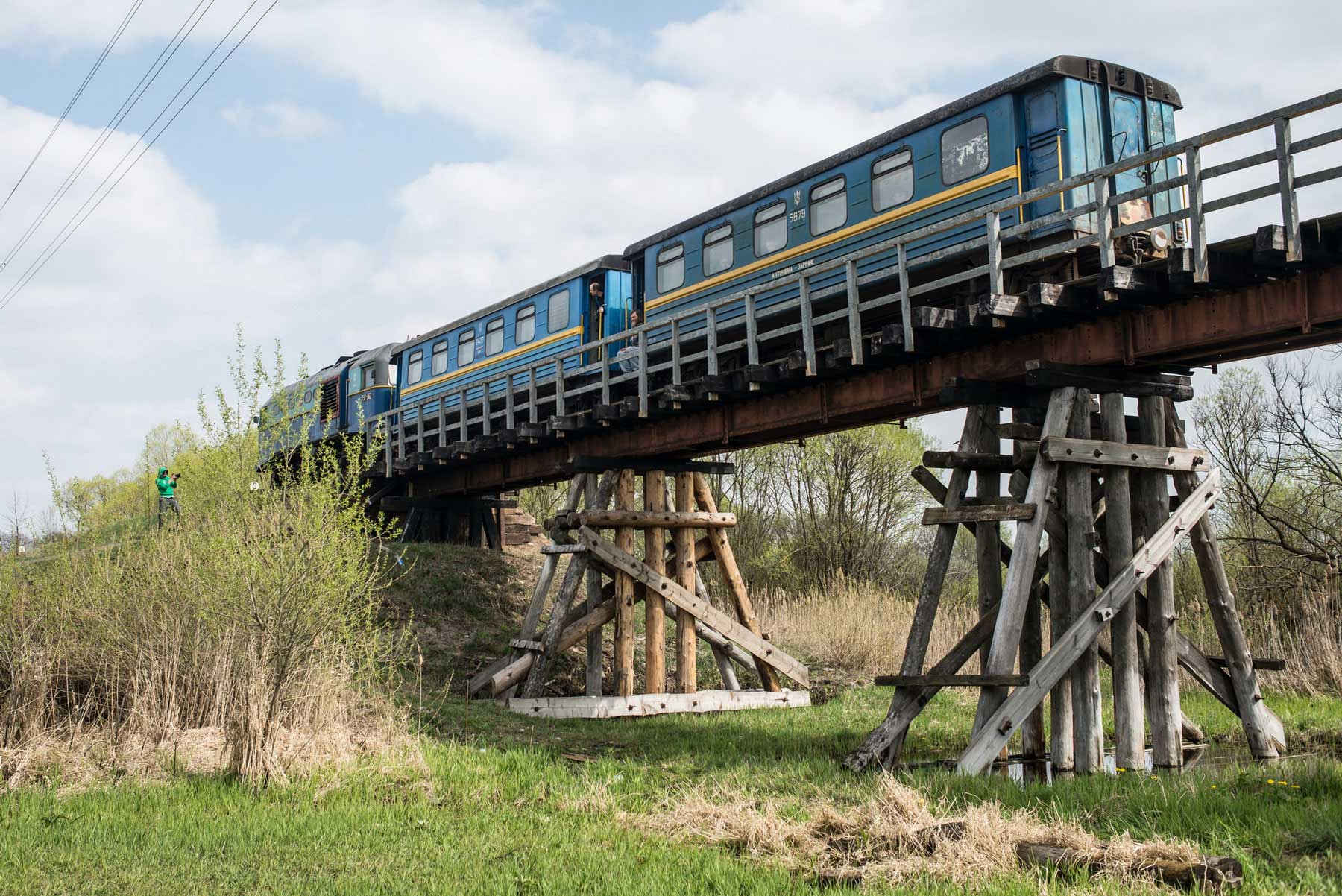
The passenger train, consisting of a diesel locomotive TU-2 and several cars, crosses the unique in Ukraine and the longest in Europe wooden railway bridge across the Styr river.
Antonivka was initially founded as a station. It has never been just a simple village. At first small houses, which were put in commission in 1903, had been built near the station. So, before the creation of the railway, the infrastructure was shaped there.
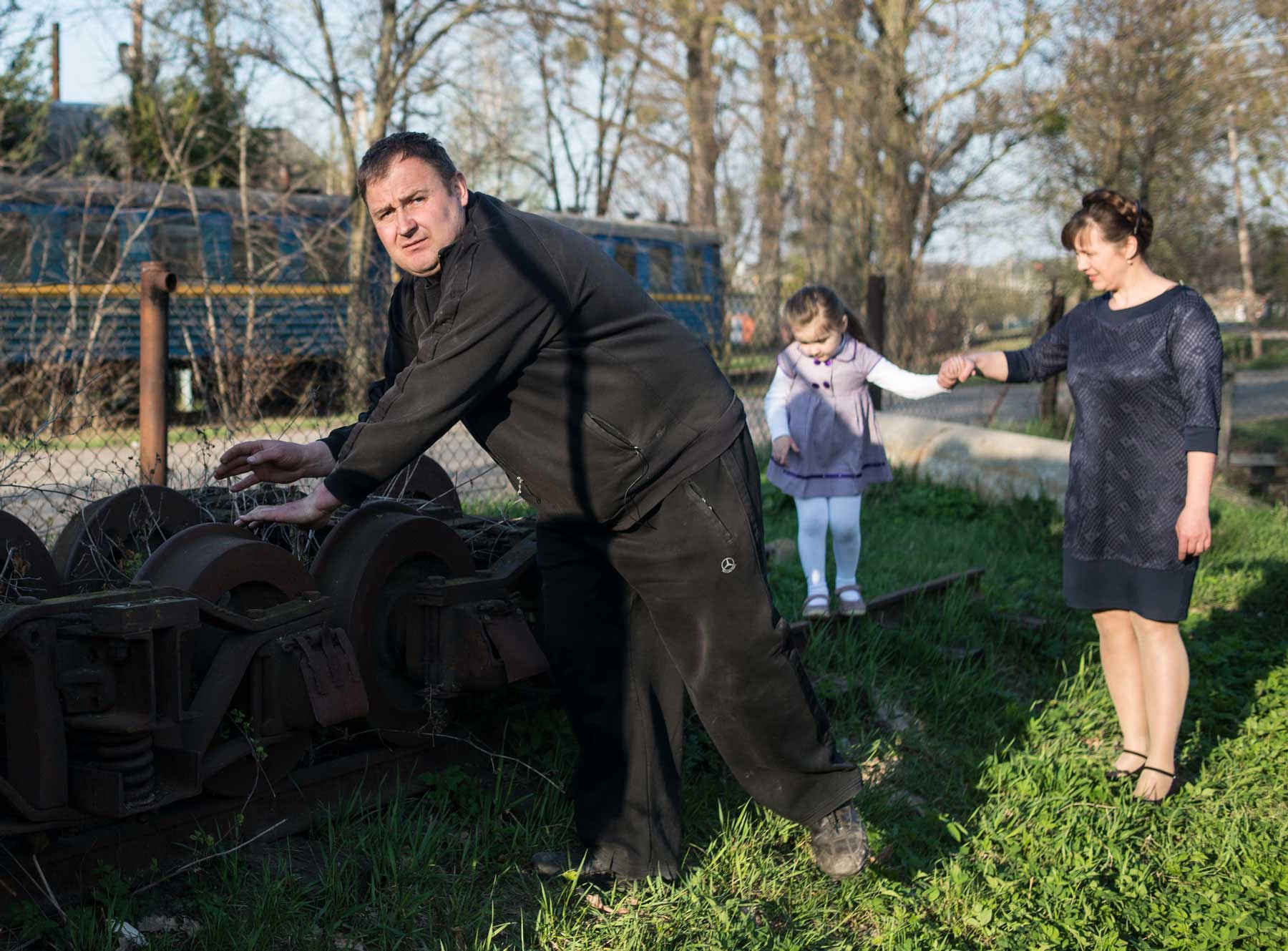
The Melnyks: the dynasty of the railwaymen
Liudmyla Melnyk and Oleksandr Melnyk are public activists and the members of the Association for the Preservation of the Ukrainian Railway History. The Melnyks maintain the narrow-gauge Antonivka-Zarichne, because they strive to preserve its history and to assure its functioning nowadays. As many years ago, this narrow-gauge railway is a strategically important object, because some of the settlements along the railroad line still have only this transport connection.
The estate of the family is located near the depot and old narrow railways, which were created in 1895. It is not surprising, because the Melnyks’ family history is tighly connected with the narrow-gauge railway.
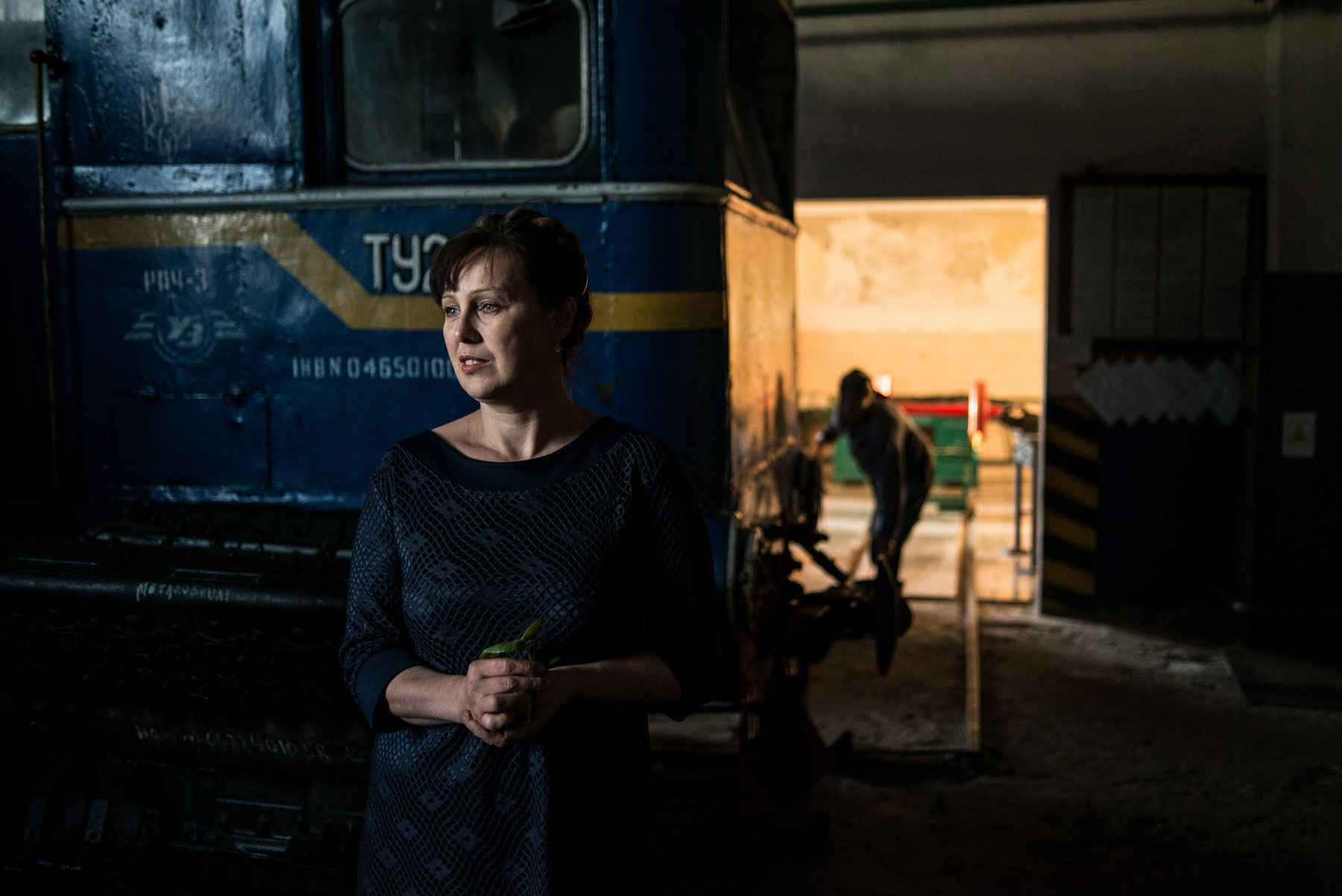
For example, Liudmyla’s whole family worked on this railway station:
— My mother’s great-great-grandfather was drafted here as a specialist in steam locomotives from Khmelnytskyi region. In fact, the whole family of my mother, the Yarmoshyks, are the founders of this narrow-gauge railway. The first postwar master (1945) was also Yarmoshyk. My grandfather and whole my family worked here, in the locomotive depot. A lot of my mother’s cousins were engine drivers and senior engineers here. It is an interesting family tradition. All my life is connected with this narrow-gauge.
Watch the video 360:
Liudmyla says that the journey could be delayed because of the technical disorders. But her mother was always ready for such situations:
— She always took a big bag of food with her. There could be a container with salo (bacon), some canned food and bread. It is good, that the distance between villages is not so big (with the help of the narrow-gauge, of course).
slideshow
It was quite possible to stay for a few days in the middle of the forest, guarding the train and feeding the passengers.
— There were no alternatives for such transport: only one little train and no roads. Sometimes, when the train broke down, people were waiting and even living there. The trainmen and locomotive drivers were waiting for somebody to help them to move out.
Once upon a time in a car, where Liudmyla was a train hostess, the representatives of the authority from Kyiv were traveling.
— All the way long they were talking and my mother was conducting an excursion. Mum knew everything about this area and they liked it so much, that asked her to work (as a guide — ed.) for half a year. In fact, my mother was a founder of this tourist movement, of these excursions on narrow-gauge. She knew this history perfectly, and when she didn’t know something she asked the local citizens about this.
Liudmyla is happy to share her childhood memories about the travelling by narrow-gauge:
— It was not so interesting to travel at nights. But in the mornings, when the sun rose, it was like in movies: forest, cobweb and the drops of dew on it. Once I saw a lot of elks. This is the most cheerful memory. Elks and fallow deer. There were so many animals!
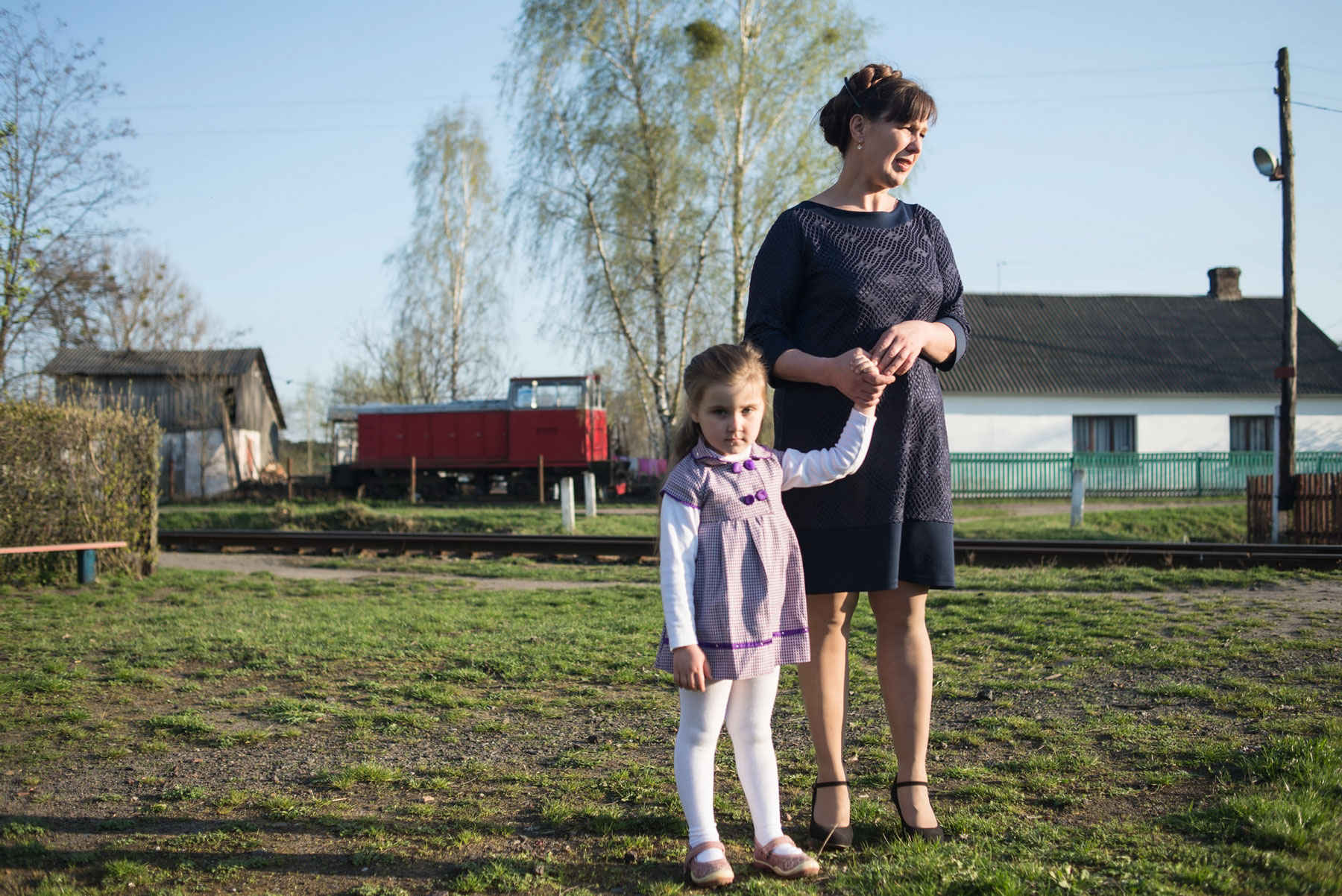
The railway education is the main, but not the first Liudmyla’s profession. Already having a legal education, she also completed the courses for trainmen.
— I thought: who knows, maybe I have to continue my mother’s business…
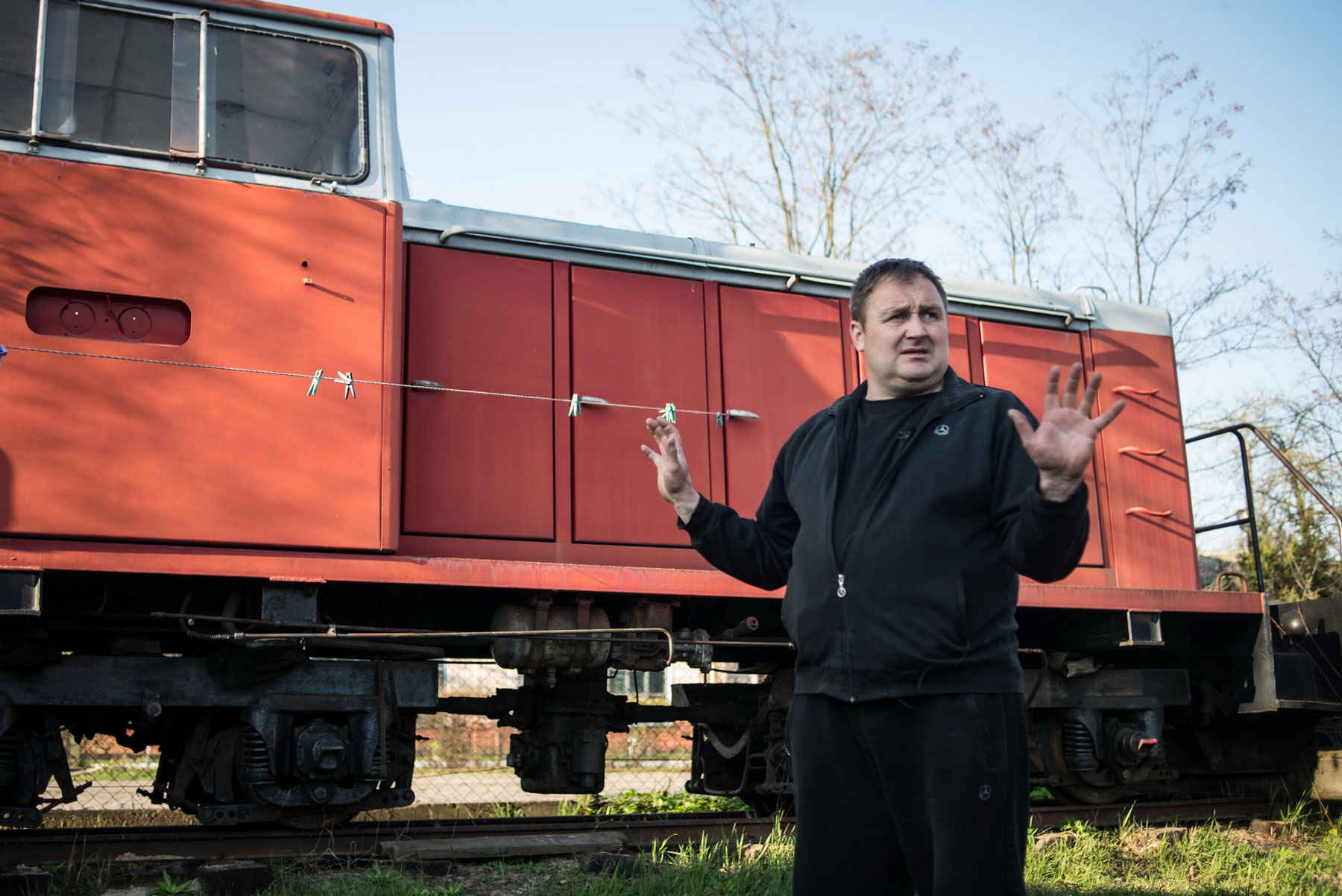
Oleksandr, Liudmyla’s husband, from early childhood had been preparing to master a profession of a railroad man, which was highly demanded at that time. His grandfather, father and elder brother also worked on the railroad:
— I knew, that I would be a railroad man. At first, I was a supervisor of the trains: I ran quickly with the radio station, coupled up the cars, waived the flag. And then step by step I became a repair engineer of diesel locomotives. All these things came in course of time.
Liudmyla adds:
— My husband has better developed technical skills. In fact, this (locomotive — ed.) is his child. He came to work in 2008. At that time there were two broken locomotives and then he was given a third. As a result, he made a beautiful rolling stock from these three locomotives.
slideshow
Oleksandr tells about the work of narrow-gauge railroad tracks in the 2000s, when there was a lot of cargo transportation:
— The narrow-gauge was not always the one, that has 2 passenger cars. It was used for transportation of almost everything: timber, canned food, diesel fuel, gasoline, petroleum products. The narrow-gauge had four trains per day: two for cargo transportation, two — for passenger. There were six diesel locomotives. It was a really large railroad.
At one time Oleksandr was a deputy of the district council and proposed to intensify the work of the narrow-gauge by its attachment to the cargo transportations of the peat:
— I wanted to make the narrow-gauge earning profit for itself. For example, in Antonivka the peat is imported as a raw material. It is pressed here and we have a point of transition from wide to narrow track. Meanwhile, the road bed is not break up, we can transship the peat into wide cabs or transport it across the districts. Nowadays the question of the alternative fuel is very important for our state. It is said that we have not enough coal, not enough raw materials. It lies on the ground, but no one takes it!
Mr. Melnyk said, that in the neighbouring village Luko is located a large peat development (370 hectares), where the derivation for groundwater was made. But the process was stopped when the question of transportation arose, because there were no roads to this point of destination.
slideshow
Oleksandr’s proposal on the usage of narrow-gauge was economically relevant in marshland and socially oriented, because it could make the transportation cheaper and provide new working places and the inflow of investments. Oleksandr explains the effectiveness of the implementation of his plan with the help of the simple examples:
— The narrow-gauge transport is very cheap. To transport a load of 10 tons per 100 kilometers, any car will spend 50 liters of fuel. And the train can carry 200 tons and burn only 100 liters of fuel. It is very easy to make a narrow-gauge: flights, sleepers. It is much cheaper than to make an asphalt road.
However, the local administration didn’t support such idea:
— The administration banned this idea, because they wanted to made a 60 kilometers of asphalt road for exportation of the peat. They played on that fact that the new road would be a great advantage for the district, but the state is not able to spend so much money on creation of the way to the bog.
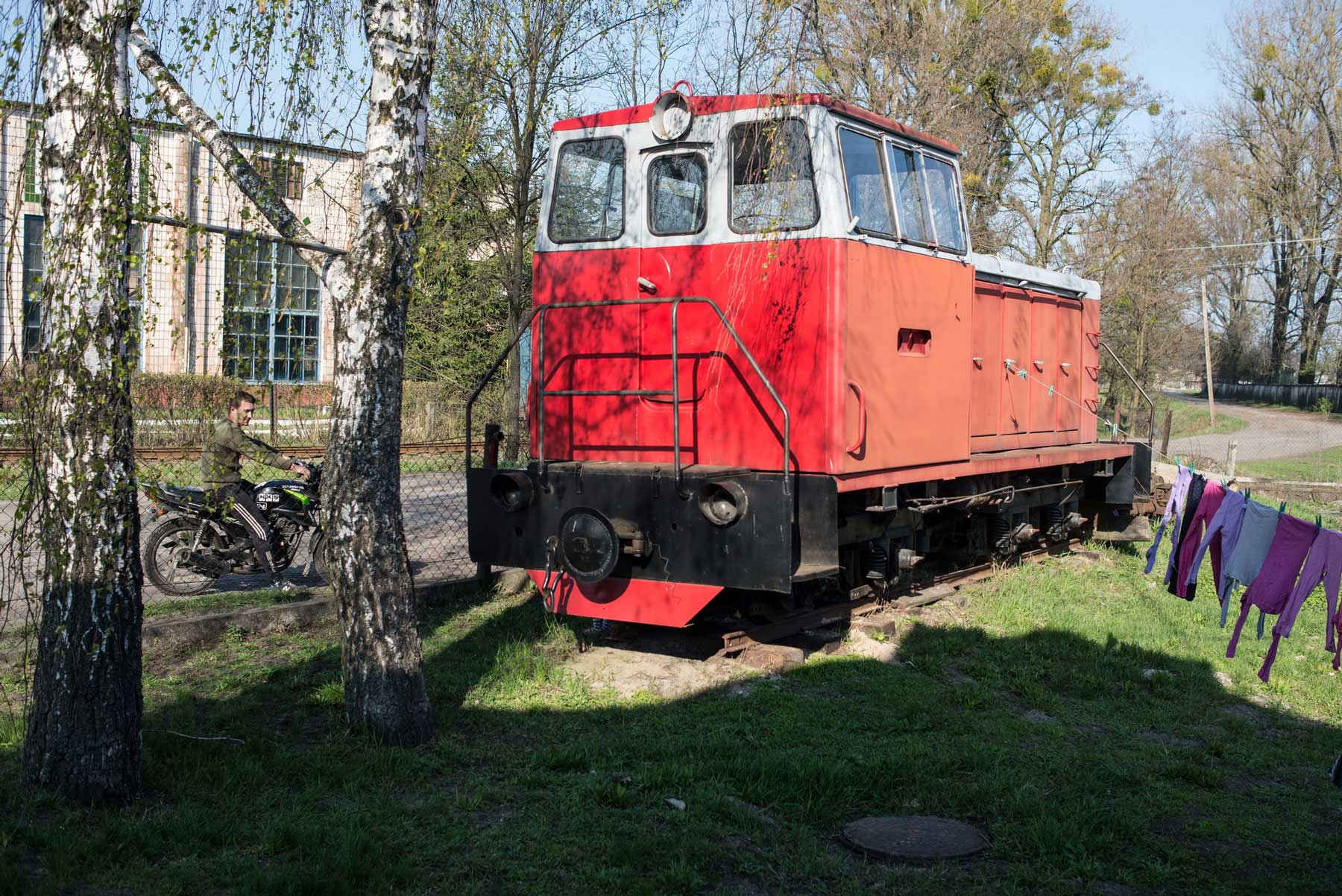
Open-air museum
There is a massive red diesel locomotive TU-6 standing in the Oleksandr’s yard. This locomotive differs from others by its function-generating mechanism, cost effectiveness and convenience in operational activity.
Liudmyla tells us that the locomotive was brought here by Dmytro Babaryk. Once he visited this district and was fascinated by the idea of the preservation of the narrow-gauge. At that times Dmytro was a student-transport worker, who was interested in the rare train from Polissia and was sure about the great prospects for its development:
— Now he (Dmytro — ed.) is a deputy head of the Association for the Preservation of the Ukrainian Railway History. He is a very kind and open-hearted person. At that times he was only 20 years old. He often visited us, we were traveling by narrow-gauge together, so he became a real fan of it.
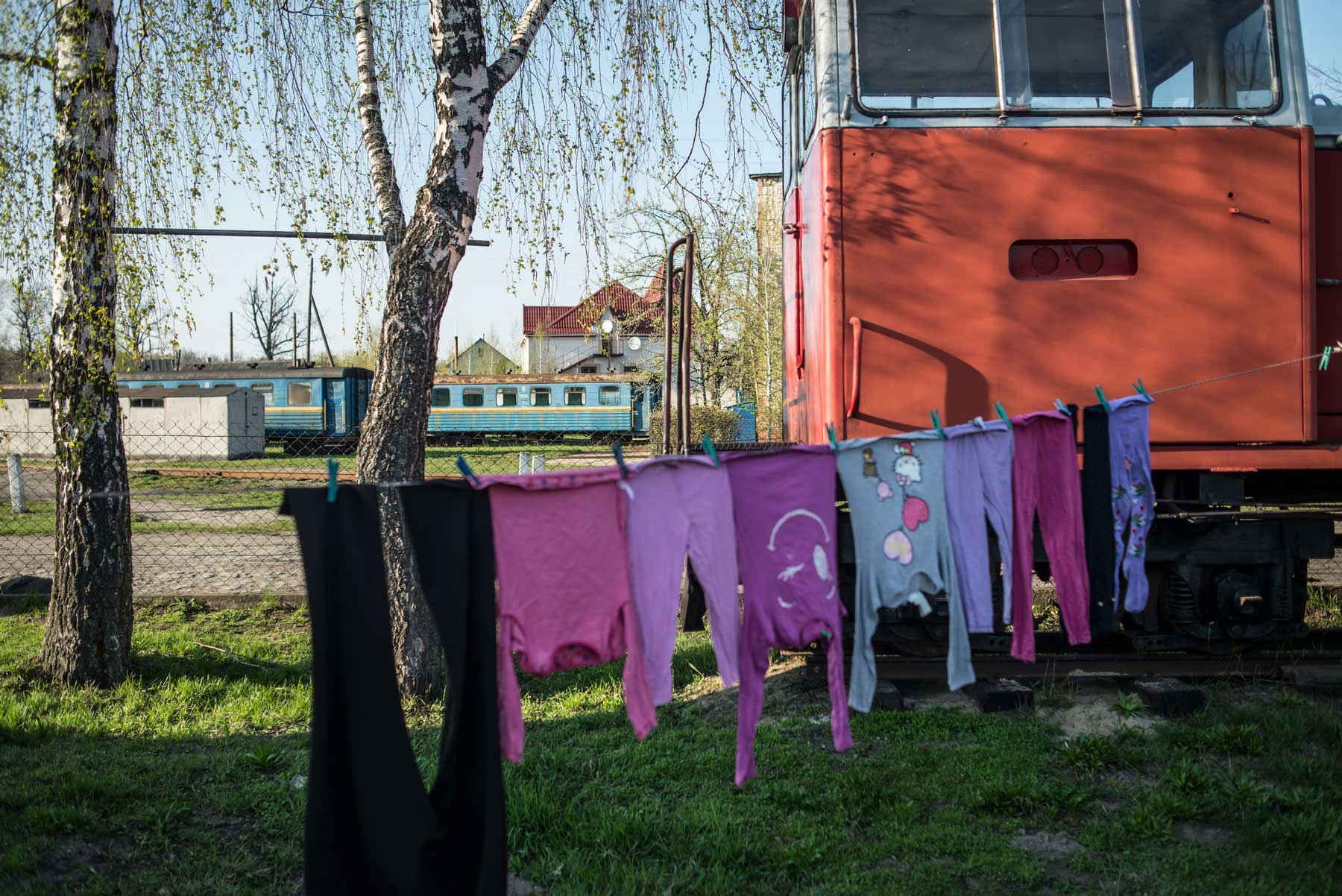
In 2006 there were hard times for narrow-gauge. Diesel locomotives were out of service and there was a lack of spare parts. Dmytro with the help of like-minded people brought a locomotive from Zakarpattia. They also bought new spare parts for it. Citizens from Kyiv, Lviv, Donetsk came to Antonivka to take part in the restoration of the history. Then the volunteers from Poland, Russia and Germany joined our initiative.
Dmytro and his friends are still helping to find necessary details for narrow-gauge, organize excursion tours. The railroad joined together many caring people. Such authentic objects like locomotives and rail cars gained enormous significance. The Melnyks say that earlier all that stuff seemed to be just the scrap metals.
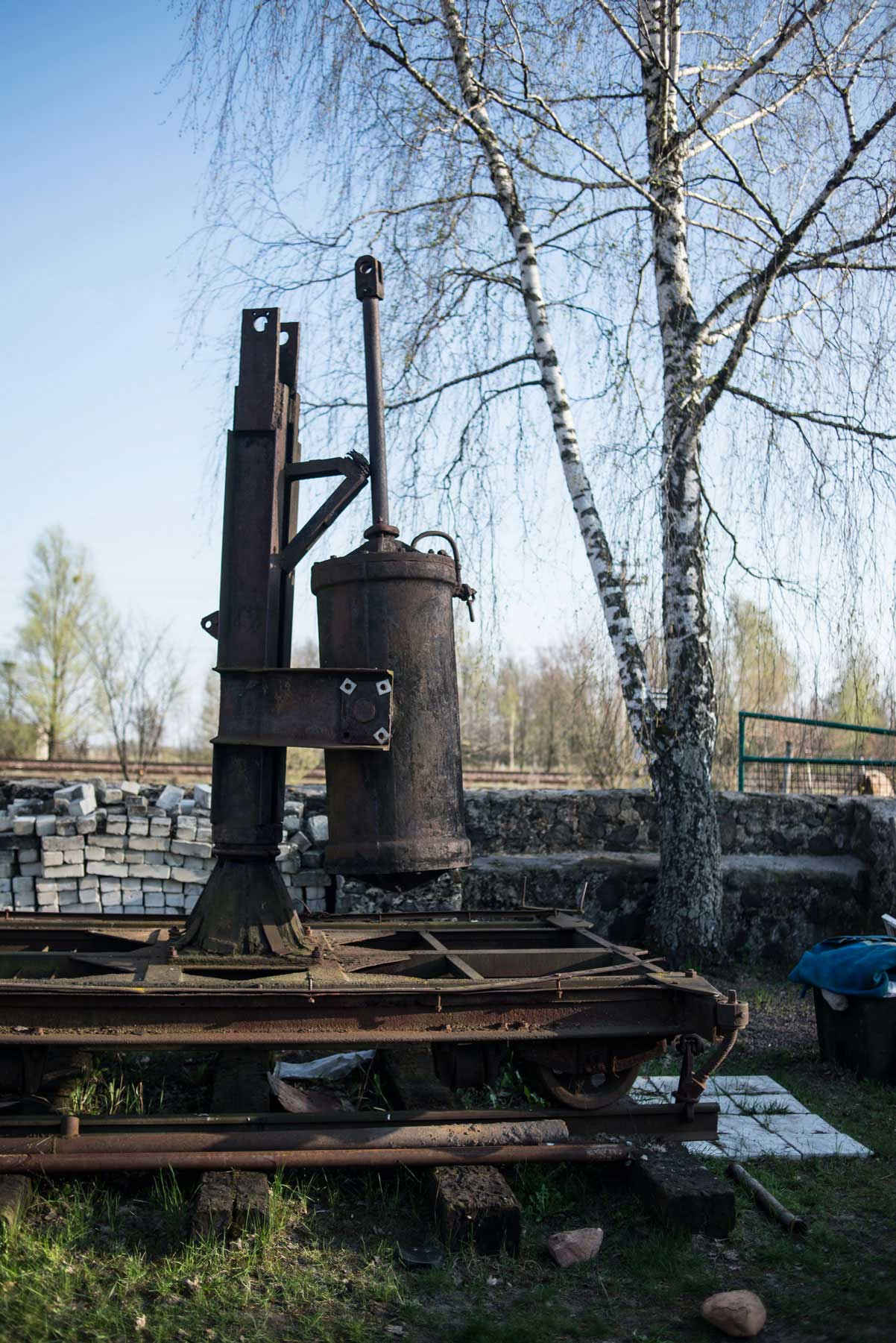
In 2007 the old trolley became the first exhibit in the museum. It was used for the transportation of the staff, for inspection trips and different repair works. Oleksandr single-handedly saved the technique from the putrefaction in dust hole. He redeemed and restored it completely. The capital repair of the engine became possible thanks to the financing of the Wolfram Vendelin (from Austria), the member of the European Association for the Preservation of the Narrow-Gauge Railways.
It is interesting that when Oleksandr proposed his Austrian college to put the seat from the Mercedes into the trolley, Vendelin reacted quite categorically, “Everything should stay as it is”. So Oleksandr agreed with such opinion that the object should have a pristine look and be as close to the original as possible.
Another rescued exhibit is a bucket. At one time it was filled with coal on the ground, lifted up by the crane and put on the locomotive. Oleksandr is sincerely happy to have such exhibit in his collection, because in course of time its value will increase.
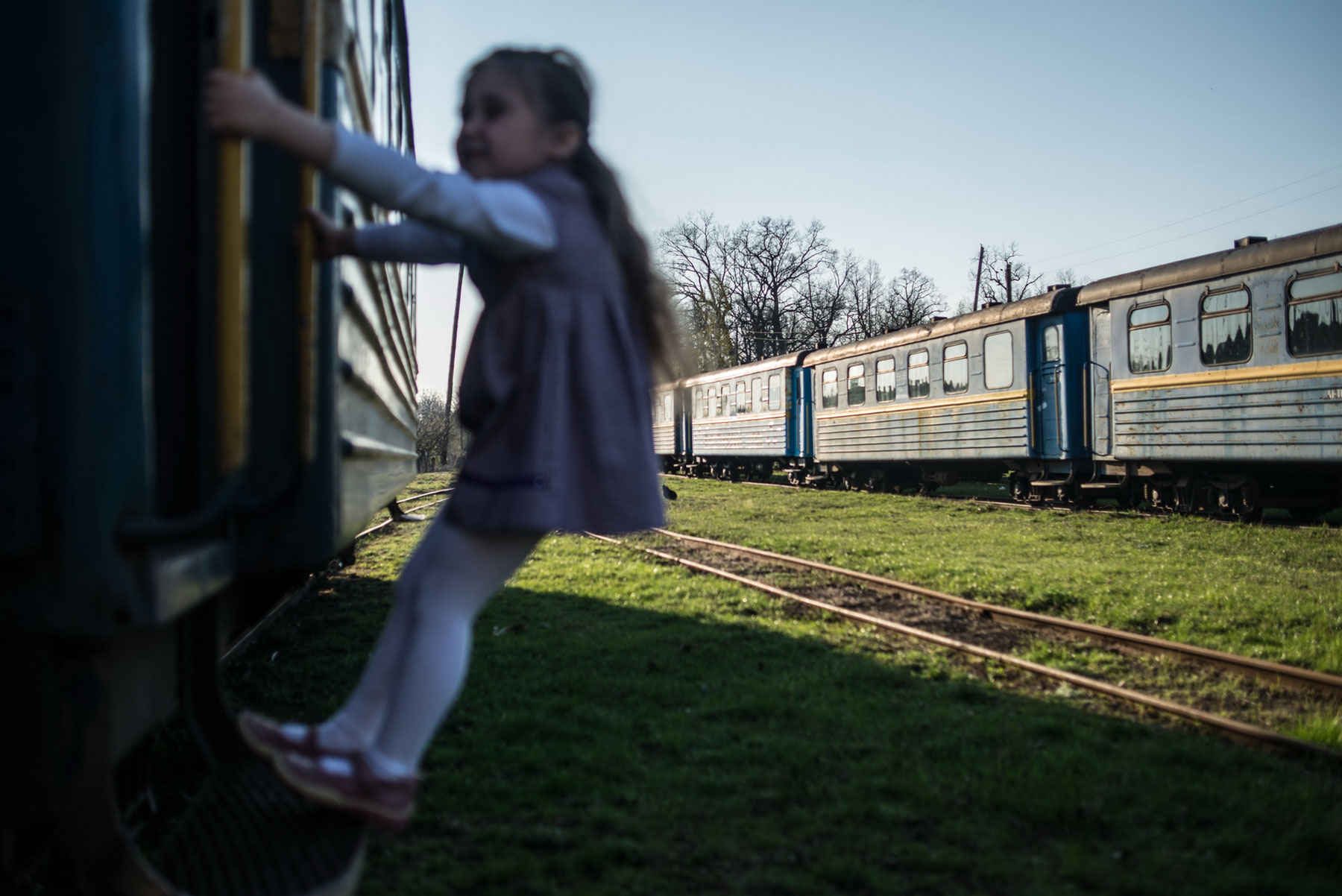
The Locomotive Depot
It looks like the life of local people was concentrated around the narrow-gauge:
— Railway is life. This is the most important thing. Here we spent all our childhood. It was the most prestigious street. When there were power cuts, the light had been never shut off on our street, so all young people came here. There were a lot of girls living in our street, and there were a lot of boys in the village. And all of them came here to play “blind Tom” (pizhmurky) and “ringolevio” (kozaky-rozbiinyky). It was a younger generation, we were older and very curious about what they are doing. They were pupils of the 10-th form, but they were playing like little children.
The Melnyks show us old photos, on which we can see a depot, that was wooden at that times. The depot gained its modern look in 1945.
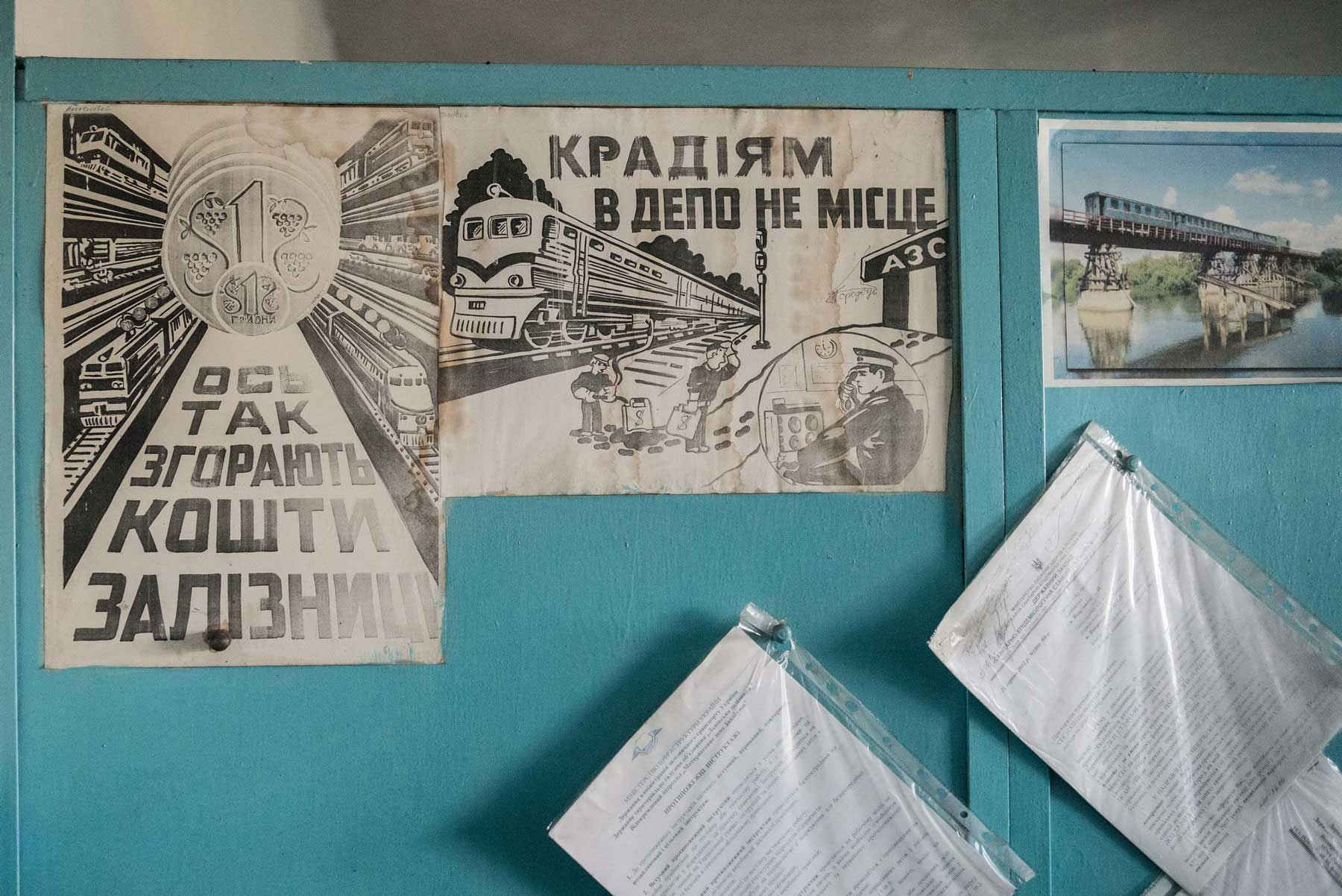
In the locomotive depot, every exhibit — whether it’s a huge locomotive, or a small detail — are like old friends. Friends who are well-known and honored here. People are proud of them and ready to talk enthusiastically about their numerous advantages. Olexander talks about locomotives, emphasizing their benefits:
— For example, here you can see our locomotive TU-7. This locomotive has not an electric, not mechanical, but hydraulic transmission. In general, this is the third type of locomotives. But is not as simple as TU-6 with mechanical transmission. And here is an electric drive. Why it has the electric transmission? It is the most up-to-date, because the electric power provides the smoothest motion forward at the beginning of the movement. The mechanical transmission is not so smooth: the human error is possible to occur, for example, the leg can slip from the pedal and provoke a jerk. As a result the passengers can fall down. The electric transmission provides smoother movement and passengers don’t feel such discomfort.
Oleksandr shows us a rare welder:
— Look, we have a generator-converter — a welding machine. Why it is unique? For the first glance it has nothing special, but it is unique because it was released in Germany in 1942. And perhaps this machine was brewing “Tiger” (for the German heavy tanks, that were used during the Second World War — ed.) tank turrets, armor. Or maybe with its help the pedals were welded to the bikes.
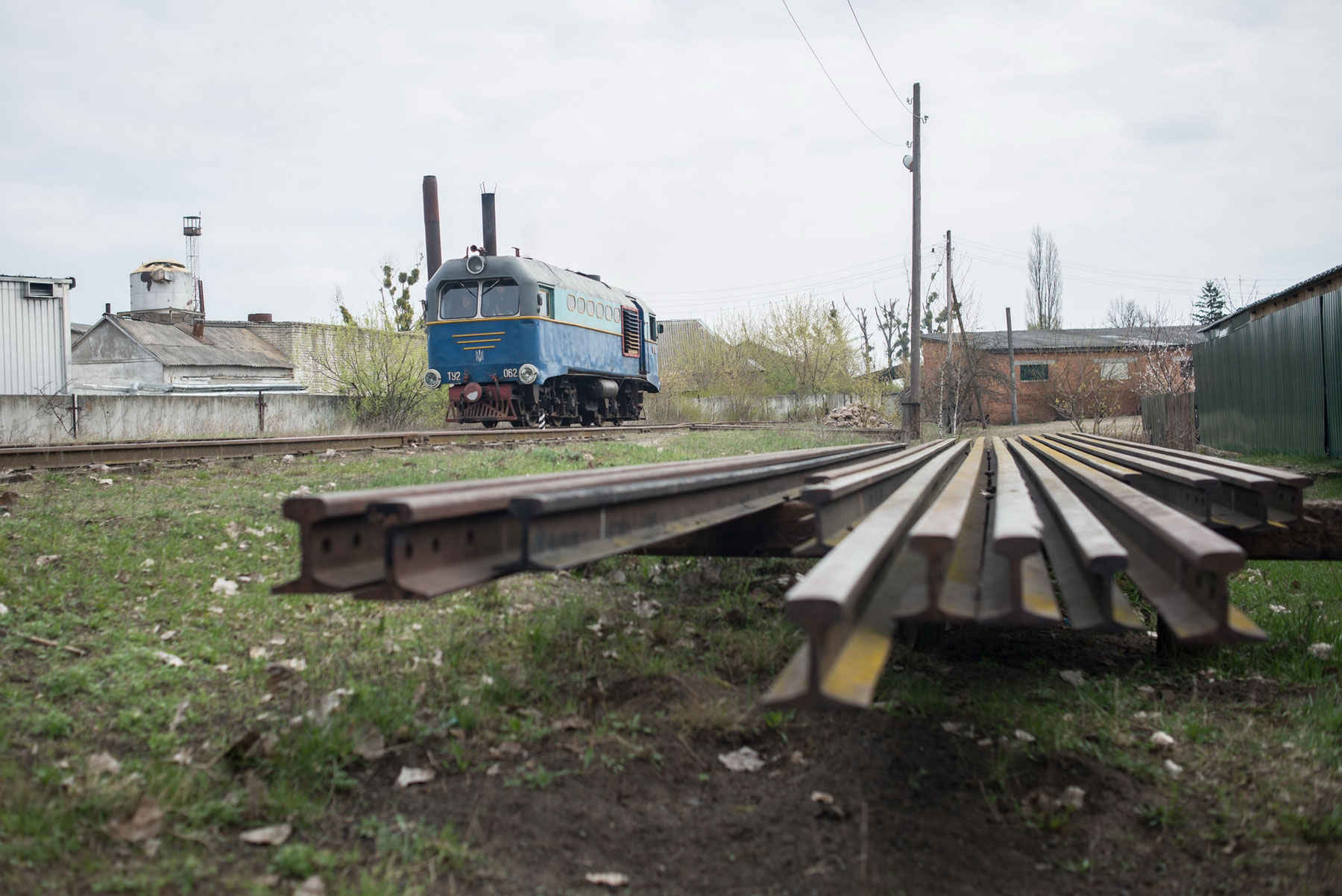
An Amber Way
Since 2007 Antonivka has hosted the “Amber Path” festival, where the local railway is actively involved. This fest is a three-days action with the performances of the ethno-bands and masterclasses on Ukrainian folk crafts. During this festival, the narrow-gauge is used for the tourist transportation from Antonivka to Bile. Liudmyla and Oleksandr as guides and organizers of the festival provide excursions in the Narrow-Gauge Railroad History Museum, telling stories about Polissia and depot in Antonivka. Their excursions are filled not only with interesting information about narrow-gauge, but also with different local sayings and jokes. Oleksandr and Liudmyla work as guides with a great enthusiasm, taking into account their experience of many years:
— In fact, this festival was founded thanks to my wife, who submitted this idea to the district administration. This proposal was heard, in spite of that fact that in 2007 the administration wanted to close the narrow-gauge. Then to make the narrow-gauge public, the idea to create this festival was approved. We wanted to promote it, making everyone know about the narrow-gauge. After such popularization and advertising, the narrow-gauge became one of the seven wonders of Rivne region.
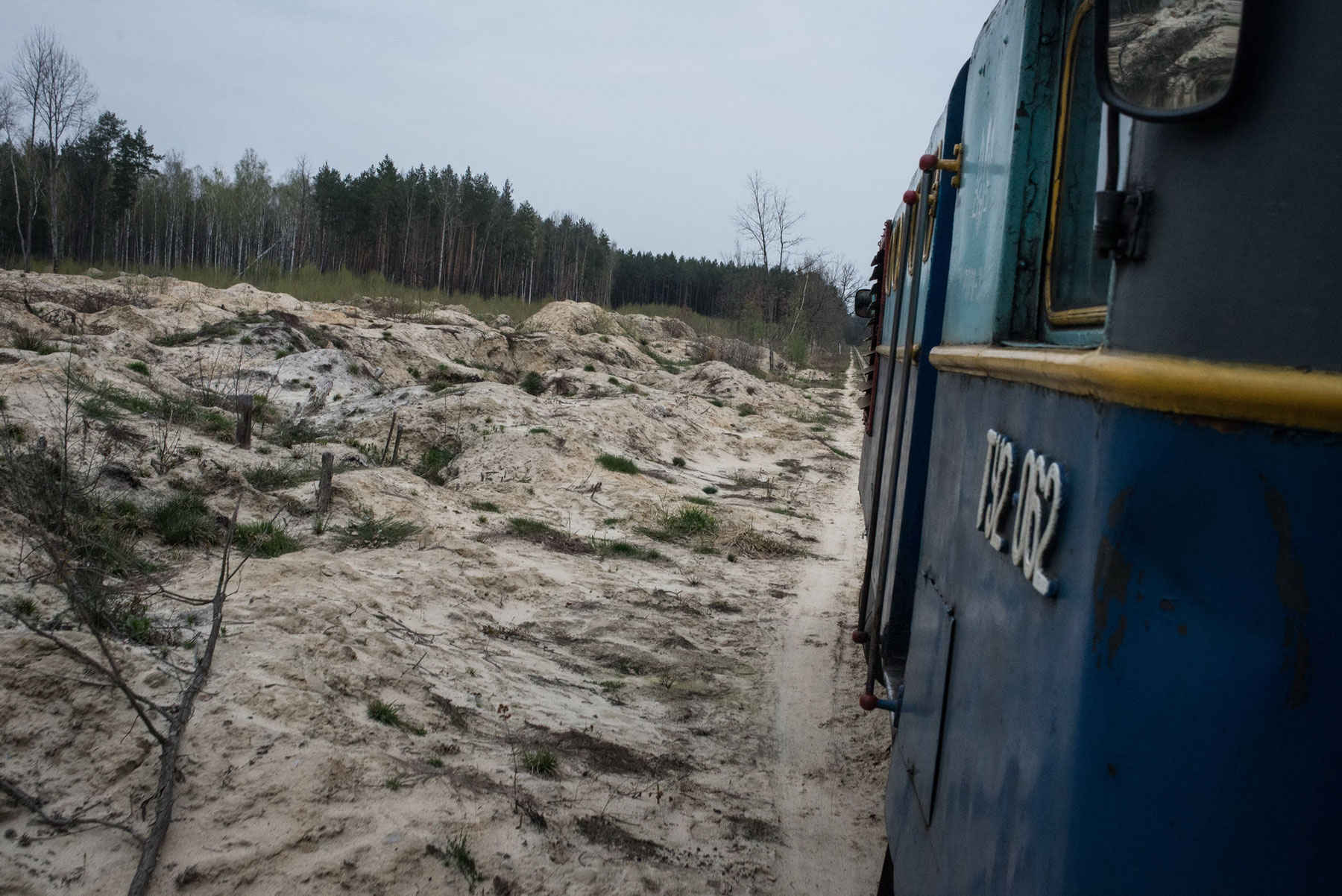
It turned out that by this time only few people knew about the existence of narrow-gauge, and moreover, only few people saw it.
— Initially we planned to call this fest “A Trolley of Polissia” (“Polisskyi tramvai”), taking into account the name of the Carpathian grass course. But the district administration decided to call it “An Amber Way”. And such name is quite relevant. You will understand this if you go by narrow-gauge to the end of the road. You will see this name. You will see these pits and corrugations. There is an amber way along this road.
Thanks to the efforts of the activists, the festival is held at the regional level. The activists believe: if many people see these picturesque places and ride by narrow-gauge, one of the three working narrow-gauges in Ukraine will have more chances to gain a “green light”.
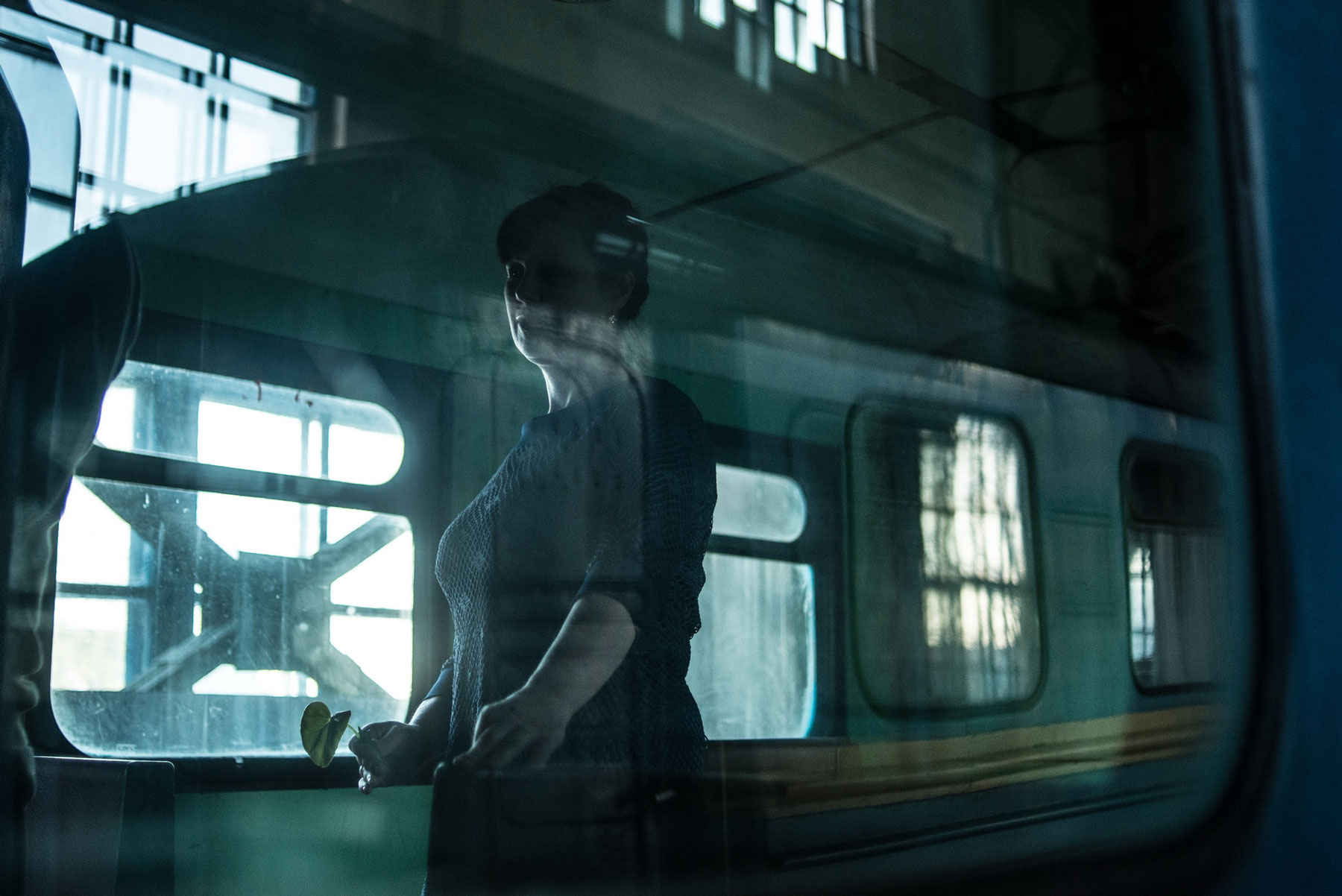
The ideas of the changes
Nowadays Liudmyla and Oleksandr are sure that the narrow-gauge road should be developed not only for passenger transportations, but also for tourism, in particular, at the international level. According to their words, Antonivka is visited by many European citizens from Austria, Poland, Serbia, Slovakia, France, Germany and even Canada. Now the organization of the sightseeing tours by narrow-gauge and the treatment of the tourists to the Ukrainian cuisine is supported by the efforts of the public activists:
— I want people to come here with the soul. Now we are involved in the creating process of the union for the historical and cultural heritage preservation of Polissia, which is called “Family” (“Rodyna”). Why did we choose such name? Because if whoever comes to us, he has to forget immediately, that he is a guest here. He becomes a member of our family. And he has to know that he comes here to his brother, sister, to his close relatives. So we are working at it.
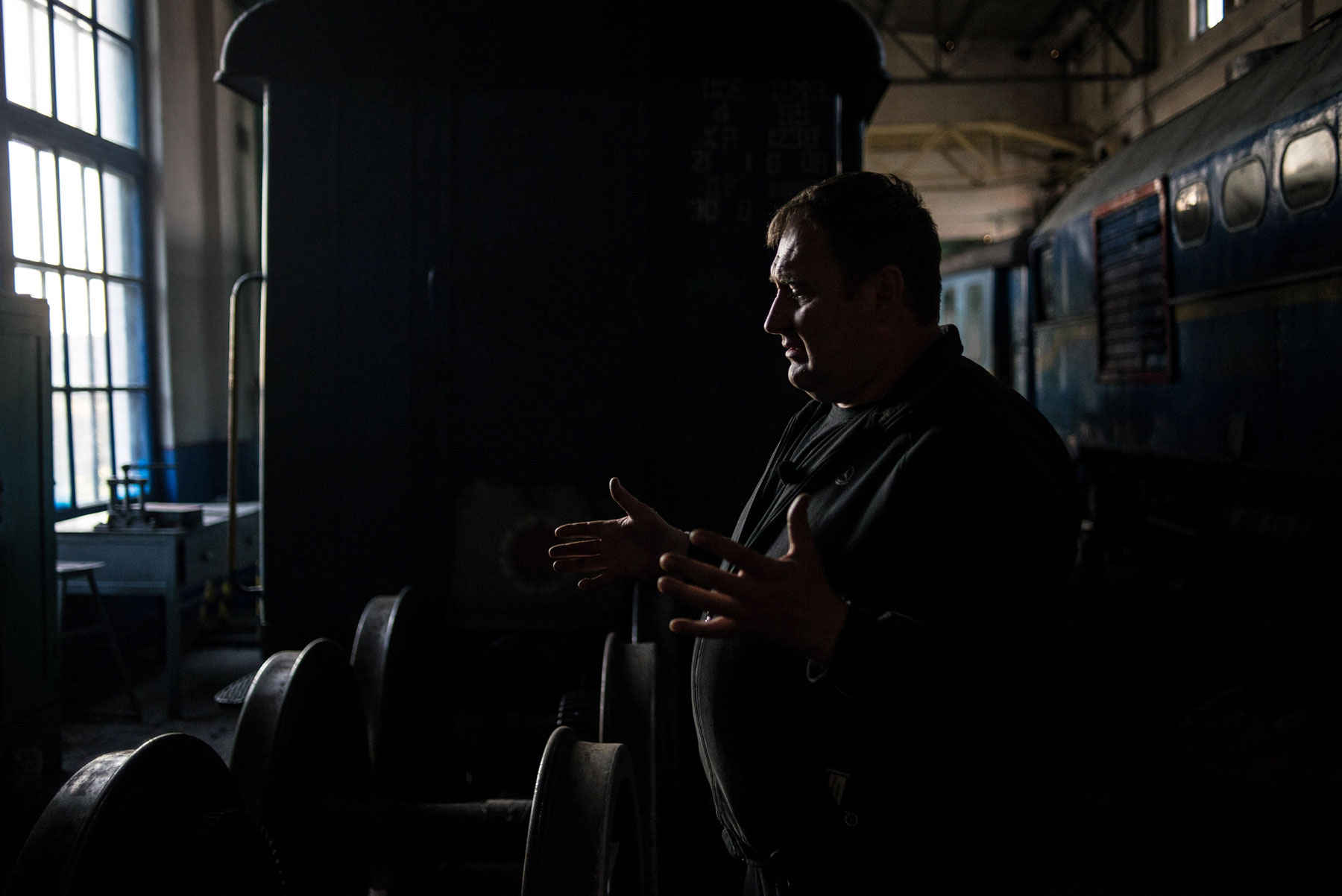
Oleksandr shares his ideas about the rebuilding of the train. The first idea is to transform one of the cab to the cab of higher class with more comfortable conditions.
— It is too cold in these cabs in winter time. In summer it is too hot here. They are more rigid, the noise isolation gives out. When I was a deputy, I proposed to make one of the cars more comfortable, put the soft pads, generator on the wheels, air conditioner and translate different videos. The passenger fare to Zarichne for the 100 km distance is 11 or 12 hryvnias. It is like to cover a distance of two bus stops in Kyiv riding by bus. But on the other hand we can level up the passenger fare to 100 hryvnias for the distance to Zarichne, but provide more comfortable conditions. We can even propose lemonade for passengers or something like that. Everything is possible to be done. When it is hot outside, the temperature inside the cab will be normal. And when he (tourist — ed.) wants to watch some video or drink quass (mildly alcoholic drink made from fermented rye bread, yeast or berries) — he can feel free to do this.
slideshow
Oleksandr wants to make the travelling by narrow-gauge for different categories of the population. He asserts that there are many guests from the West who have a great desire to pay good money and take on lease the whole locomotive or cab for travelling and excursions. And again, we need support from the state railway for such purposes:
— There are not so many tourists like them, but they are ready to pay a lot of money and these funds are used to save the Ukrainian state railway from having the millionth loses. In a course of time narrow-gauge will start to bring some profit from tourism. The popularization — is a one thing, but to make a comfortable car — is quite another. For example, there are two cars, and the third is with more comfortable conditions. And it turns out that even if there are two men traveling in this comfortable car, they will bring the same profit as all passengers traveling in the car without special conditions. But in the car of higher class they can feel free to travel with convenience and have some drinks.
According to the Oleksandr’s words, there are many tourists traveling by narrow-gauge, having with them bicycles. There are no special places for the bikes in the cars, so it is necessary to think about how to provide comfortable conditions for such travelers.
There are many ways for the development of the narrow-gauge in Polissia. This railroad has a really huge tourist potential. The Melnyks are extremely happy that there are many active people who do their best for the development of the narrow-gauge, despite the fact that this railroad was planned to be transformed into the metal scrap. The narrow-gauge, which is more than one hundred years old, is still alive. It joins together a lot of people. The information about it spreads not in only in Ukraine, but also abroad. The constant development of the narrow-gauge is provided thanks to the efforts of local active citizens and the representatives of the administration.
How we were shooting
Watch our video blog about the preparation and the beginning of the expedition to Polissia; about our trip to the first point of our expedition — Antonivka and, in particular, our traveling by the narrow-gauge Antonivka-Zarichne.

